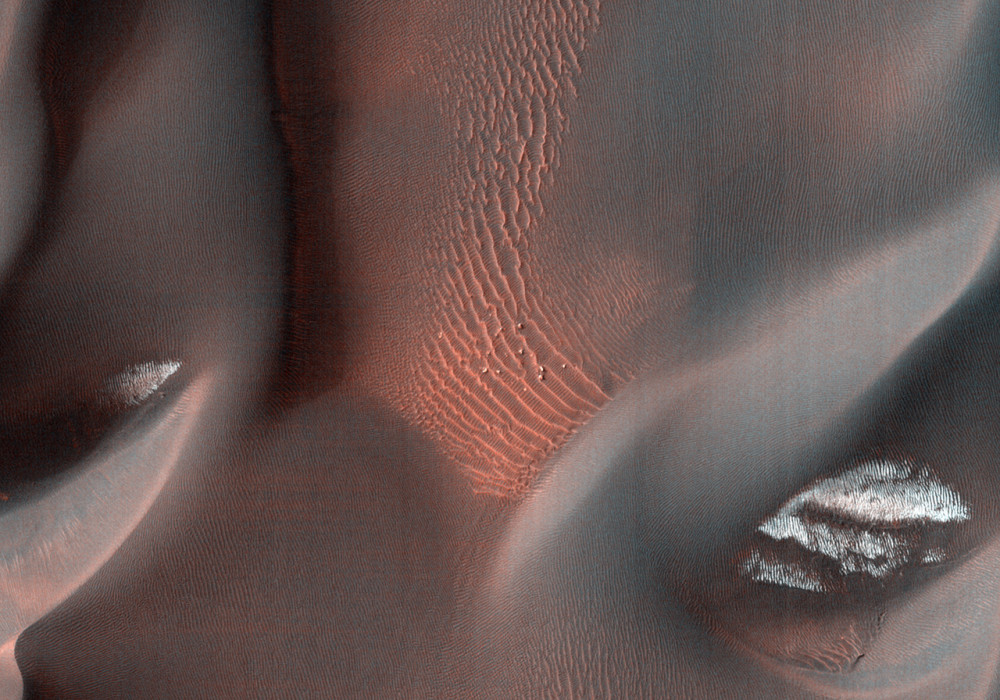This observation shows the edge of a dark dune field on the floor of Proctor Crater, a 150 kilometer diameter crater in the southern highlands of Mars.
The subimage is a close-up view of the dark dunes. These dunes are most likely composed of basaltic sand that has collected on the bottom of the crater. Superimposed on their surface are smaller secondary dunes which are commonly seen on terrestrial dunes of this size. Near the crests of the dark dunes are bright patches of frost. Dark spots within the frost patches are areas where defrosting is occurring.
Many smaller and brighter bed forms, most likely small dunes or granule ripples, cover the substrate between the larger dark dunes as well as most of the floor of Proctor Crater. In many locations, large boulders are seen on the same surfaces as the bright bed forms. The dark dunes stratigraphically overlie the small bright bed forms indicating that the darker dunes formed more recently.
However in several areas, the dark dunes appear to influence the orientation of the small bright dunes, possibly by wind flowing around the larger dunes, suggesting that both dark and bright bed forms are coeval.
Written by: Maria Banks (28 April 2010)
More info and image formats at http://hirise.lpl.arizona.edu/PSP_002455_1320
Image: NASA/JPL/University of Arizona
